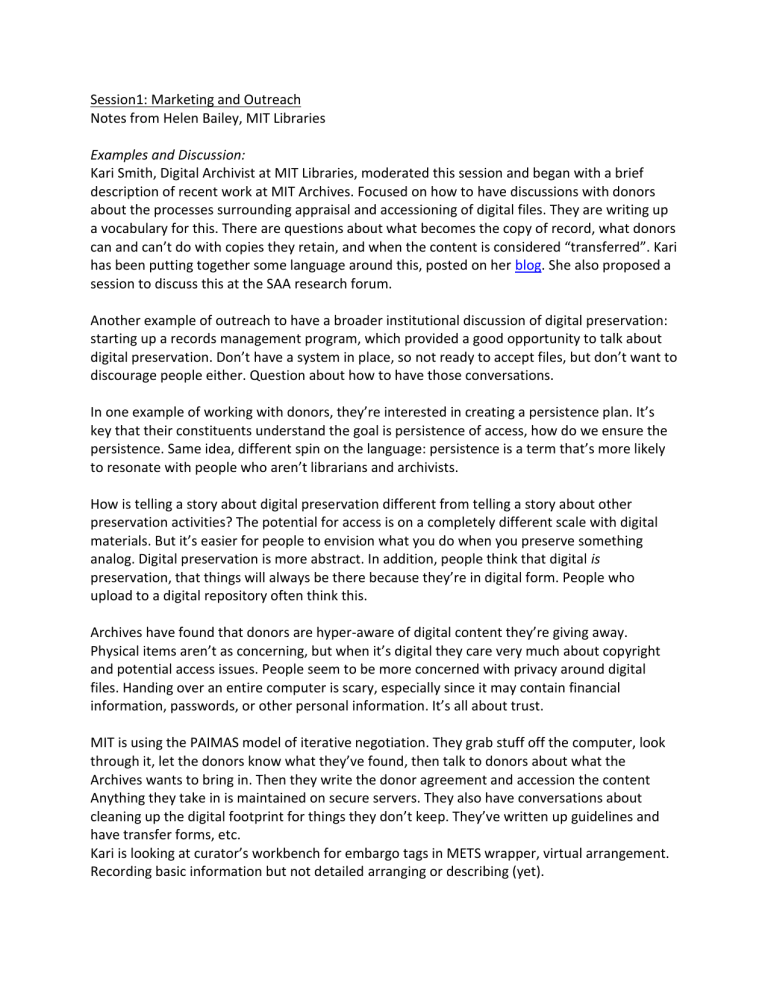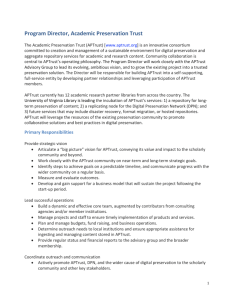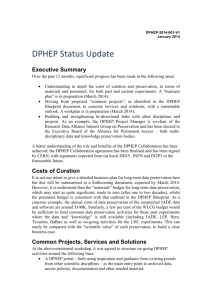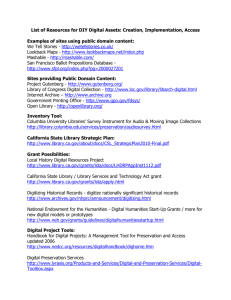Notes, Helen Bailey - Projects at Harvard

Session1: Marketing and Outreach
Notes from Helen Bailey, MIT Libraries
Examples and Discussion:
Kari Smith, Digital Archivist at MIT Libraries, moderated this session and began with a brief description of recent work at MIT Archives. Focused on how to have discussions with donors about the processes surrounding appraisal and accessioning of digital files. They are writing up a vocabulary for this. There are questions about what becomes the copy of record, what donors can and can’t do with copies they retain, and when the content is considered “transferred”. Kari has been putting together some language around this, posted on her blog . She also proposed a session to discuss this at the SAA research forum.
Another example of outreach to have a broader institutional discussion of digital preservation: starting up a records management program, which provided a good opportunity to talk about digital preservation. Don’t have a system in place, so not ready to accept files, but don’t want to discourage people either. Question about how to have those conversations.
In one example of working with donors, they’re interested in creating a persistence plan. It’s key that their constituents understand the goal is persistence of access, how do we ensure the persistence. Same idea, different spin on the language: persistence is a term that’s more likely to resonate with people who aren’t librarians and archivists.
How is telling a story about digital preservation different from telling a story about other preservation activities? The potential for access is on a completely different scale with digital materials. But it’s easier for people to envision what you do when you preserve something analog. Digital preservation is more abstract. In addition, people think that digital is preservation, that things will always be there because they’re in digital form. People who upload to a digital repository often think this.
Archives have found that donors are hyper-aware of digital content they’re giving away.
Physical items aren’t as concerning, but when it’s digital they care very much about copyright and potential access issues. People seem to be more concerned with privacy around digital files. Handing over an entire computer is scary, especially since it may contain financial information, passwords, or other personal information. It’s all about trust.
MIT is using the PAIMAS model of iterative negotiation. They grab stuff off the computer, look through it, let the donors know what they’ve found, then talk to donors about what the
Archives wants to bring in. Then they write the donor agreement and accession the content
Anything they take in is maintained on secure servers. They also have conversations about cleaning up the digital footprint for things they don’t keep. They’ve written up guidelines and have transfer forms, etc.
Kari is looking at curator’s workbench for embargo tags in METS wrapper, virtual arrangement.
Recording basic information but not detailed arranging or describing (yet).
Key Points and Ideas:
Talk about digital preservation in other terms that will generate interest among stakeholders.
The digital preservation community doesn’t have a communication plan. We should have one and it should address communication with internal and external audiences, including both advocacy and marketing.
Storytelling. If you’re going to talk about what you do, tell it in layman’s terms, in story form. This is very important for fundraising.
Idea to crosswalk terminologies and make a glossary of terms for different audiences.
Would be interesting to partner with a marketing class and have them work on how to market persistence as an assignment. Note that we have people here with connections at HBS and Sloan…see if we can make this happen!
How do we keep the conversation out of disaster mode? We don’t want to scare people off with threats or only speak in terms of emergencies. Focus on incentives.
Keep the conversation positive. BUT note that there’s something to be said for talking about risk (the phrase “mitigating risk” came up a few times). Sometimes the shock value is important. Talking in terms of protecting their investment (student, faculty, institution) can be helpful.
Internet link obsolescence is a good starting point because many people are familiar with that and there are ways to mitigate that risk. Then move toward preserving the actual content at those links.
Most of the resources folks have found on this topic have been through in-person sharing. It would be helpful to pull resources together and create a collaborative space for resources and documentation on digital preservation communication. This is good potential work for a regional NDSA group. Can we using Digital Commonwealth space for gathering resources?
Resources:
ALA outreach group, have they produced anything on digital preservation?
NDSA digital preservation in a box communications kit
ARMA literature on marketing
AIIM webinars?
Area 51 digital preservation stack exchange. Is this still alive? Yes, and there’s also one on digital forensics.








